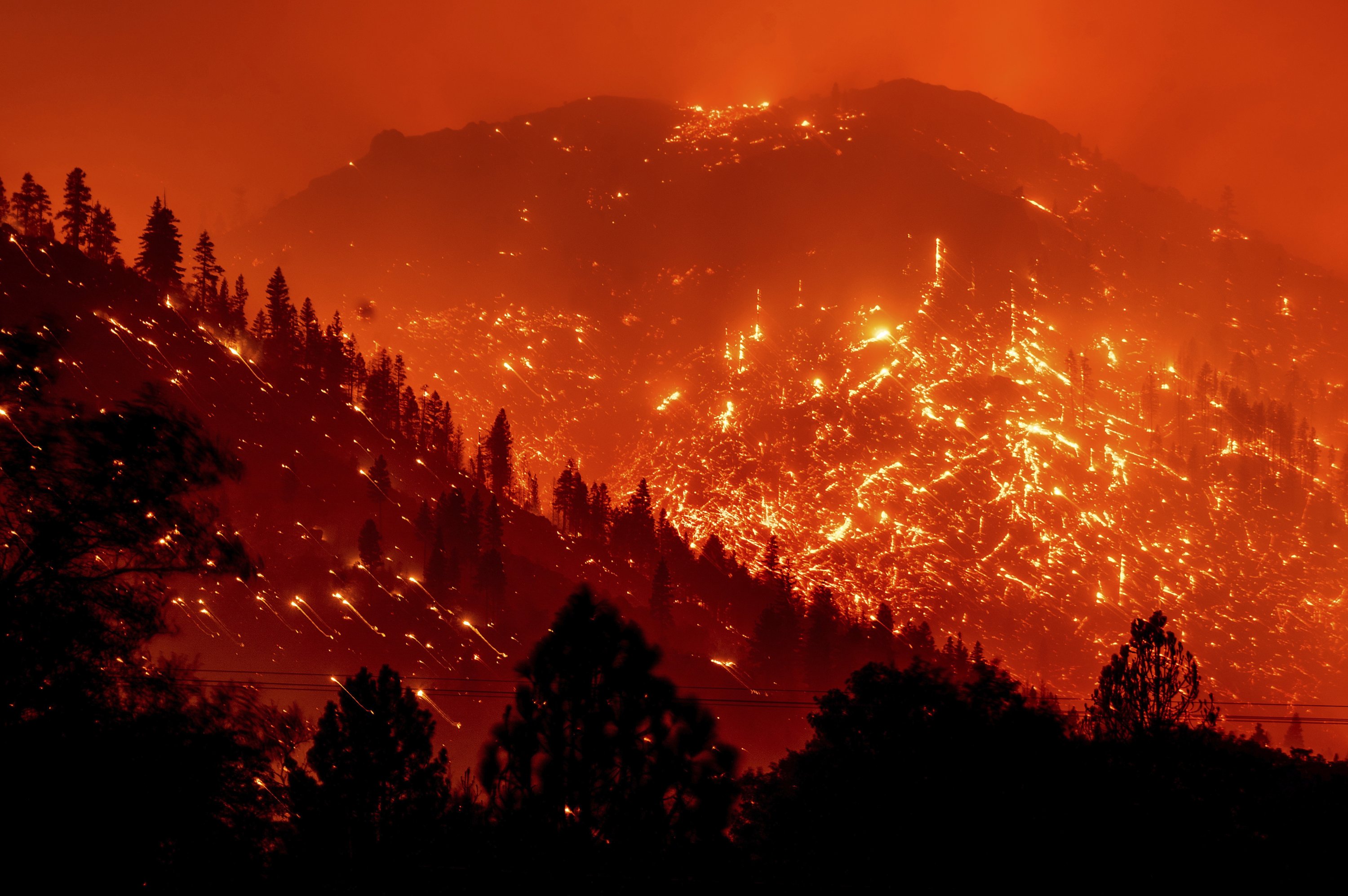Aluminum wrap used to protect homes in California wildfires
RENO, Nev. — Martin Diky said he panicked as a large wildfire started racing down a slope toward his wooden house near Lake Tahoe. The contractor had enough time to research quickly and decided to wrap his mountain home with an aluminum protective covering. The material that can withstand intense heat for short periods resembles tin foil from the kitchen drawer. It is modeled after the tent-like shelters that wildland firefighters use as a last resort to protect themselves when trapped by flames. Diky, who lives mostly in the San Francisco Bay Area, bought $6,000 worth of wrapping from Firezat Inc. in San Diego, enough to cover his 1,400-square-foot (130-square-meter) second home on the edge of the small California community of Meyers.
“It’s pretty expensive, and you’d feel stupid if they stopped the fire before it got close,” he said. “But I’m happy we did it. It was pretty nerve-wracking when the flames came down the slope.” The flexible aluminum sheets that Diky affixed to his $700,000 home are not widely used because they are pricey and difficult to install. However, they have saved some properties, including historic cabins managed by the U.S. government.

This week, fire crews even wrapped the base of the world’s giant tree to protect it from wildfires burning near a famous grove of gigantic old-growth sequoias in California’s Sequoia National Park. The colossal General Sherman Tree, some of the other sequoias in the Giant Forest, a museum, and some other buildings also were wrapped amid the possibility of intense flames.
It comes after another aluminum-wrapped home near Lake Tahoe survived the Caldor Fire, about 20 miles (32 kilometers) west of Diky’s home while neighboring houses were destroyed. The wrapping deflects heat away from buildings, helping prevent flammable materials from combusting. It also keeps airborne embers — a significant contributor to spreading wildfires — from slipping through vents and other openings in a home. With a fiberglass backing and acrylic adhesive, the wraps can withstand heat up to 1,022 degrees Fahrenheit (550 Celsius).
About a decade ago, most wildfire damages were blamed on homes catching fire as flames burned nearby vegetation. Recent studies suggest a more significant role is structure-to-structure fires that spread in a domino effect because of the tremendous heat that causes manufactured materials to burst into flames. The company where Diky bought his wraps gets about 95% of its sales from the U.S. Forest Service and National Park Service. Firezat Inc. founding president Dan Hirning estimates the Forest Service has wrapped 600 to 700 buildings, bridges, communication towers, and other structures in national forests this year alone.
Firefighters on social media liken the wraps to a “big baked potato.” One who helped install some said he felt like he was “wrapping Christmas presents.” Forest Service officials say they have used the wraps throughout the American West for several years to protect sensitive structures. They have wrapped the Angora Ridge Lookout at Lake Tahoe, a nationally registered historic fire lookout tower, said Phil Heitzke, an agency battalion chief. “Many times, Forest Service structures are wrapped well before the fire,” he told news often can then focus on protecting other buildings or other work. First sells fire shield rolls 5 feet (1.5 meters) wide by 200 feet (61 meters) long for about $700 each. Installation by a contractor typically costs thousands of dollars.




